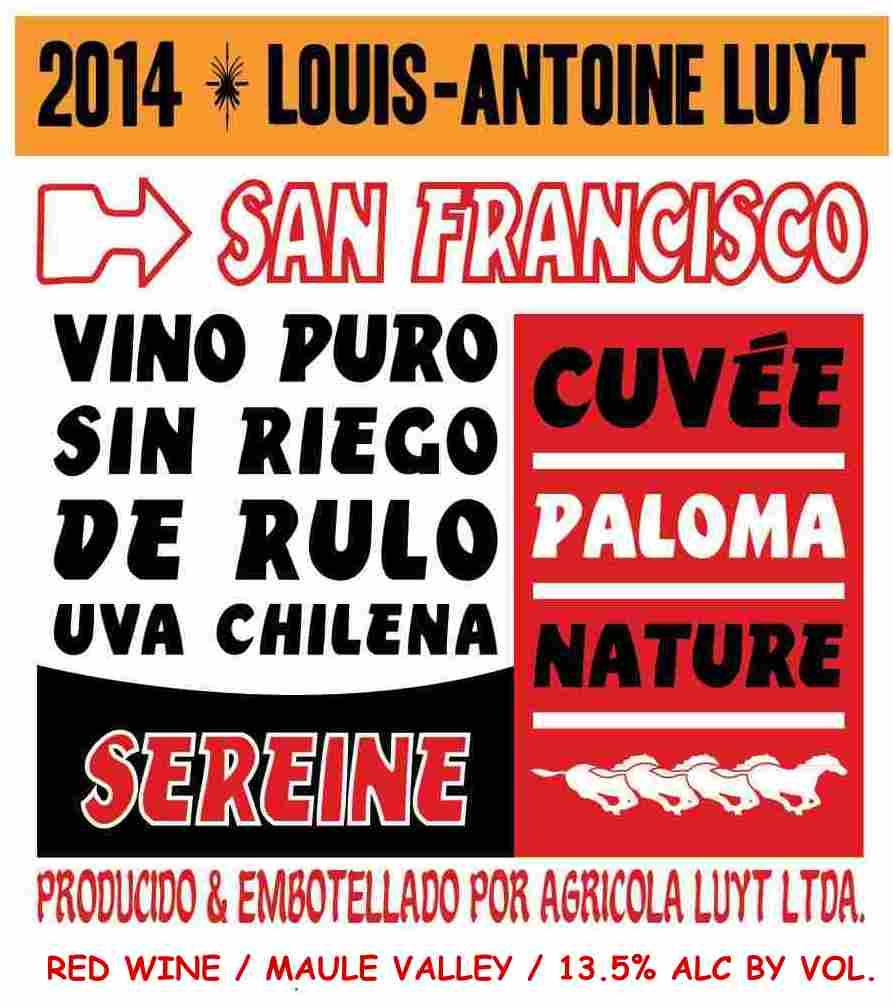2014 Maule Valley Red Blend
Louis-Antoine Luyt Cuvee Paloma Sereine is a captivating red blend from the esteemed Maule Valley, crafted in the promising 2014 vintage. This wine showcases a deep, vibrant red hue that entices the eye. On the palate, it offers a medium-bodied experience, balanced by a refreshing acidity that enhances its overall appeal. The wine presents a medium intensity of fruit, characterized by inviting notes of red berries and subtle dark fruit undertones. Tannins are firm yet well-integrated, providing structure without overwhelming the delightful fruit flavors. As a food-friendly option, this red blend has a dry profile, making it a versatile choice for a variety of culinary pairings.
Louis-Antoine Luyt Cuvee Paloma Sereine is a captivating red blend from the esteemed Maule Valley, crafted in the promising 2014 vintage. This wine showcases a deep, vibrant red hue that entices the eye. On the palate, it offers a medium-bodied experience, balanced by a refreshing acidity that enhances its overall appeal. The wine presents a medium intensity of fruit, characterized by inviting notes of red berries and subtle dark fruit undertones. Tannins are firm yet well-integrated, providing structure without overwhelming the delightful fruit flavors. As a food-friendly option, this red blend has a dry profile, making it a versatile choice for a variety of culinary pairings.




